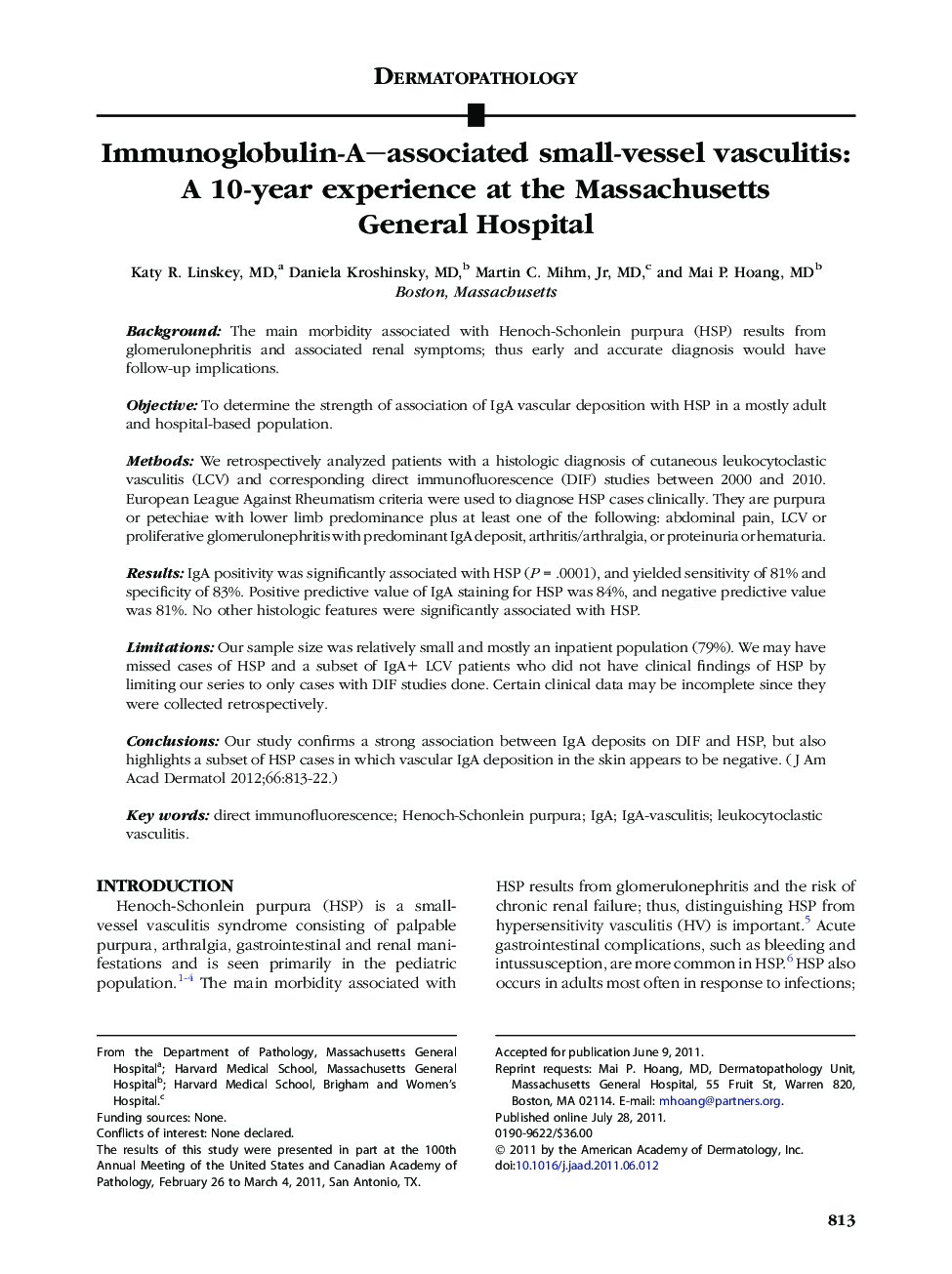| Article ID | Journal | Published Year | Pages | File Type |
|---|---|---|---|---|
| 3206701 | Journal of the American Academy of Dermatology | 2012 | 10 Pages |
BackgroundThe main morbidity associated with Henoch-Schonlein purpura (HSP) results from glomerulonephritis and associated renal symptoms; thus early and accurate diagnosis would have follow-up implications.ObjectiveTo determine the strength of association of IgA vascular deposition with HSP in a mostly adult and hospital-based population.MethodsWe retrospectively analyzed patients with a histologic diagnosis of cutaneous leukocytoclastic vasculitis (LCV) and corresponding direct immunofluorescence (DIF) studies between 2000 and 2010. European League Against Rheumatism criteria were used to diagnose HSP cases clinically. They are purpura or petechiae with lower limb predominance plus at least one of the following: abdominal pain, LCV or proliferative glomerulonephritis with predominant IgA deposit, arthritis/arthralgia, or proteinuria or hematuria.ResultsIgA positivity was significantly associated with HSP (P = .0001), and yielded sensitivity of 81% and specificity of 83%. Positive predictive value of IgA staining for HSP was 84%, and negative predictive value was 81%. No other histologic features were significantly associated with HSP.LimitationsOur sample size was relatively small and mostly an inpatient population (79%). We may have missed cases of HSP and a subset of IgA+ LCV patients who did not have clinical findings of HSP by limiting our series to only cases with DIF studies done. Certain clinical data may be incomplete since they were collected retrospectively.ConclusionsOur study confirms a strong association between IgA deposits on DIF and HSP, but also highlights a subset of HSP cases in which vascular IgA deposition in the skin appears to be negative.
